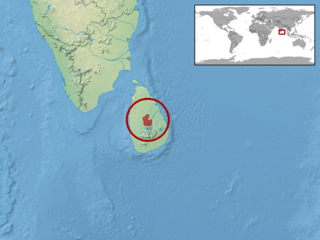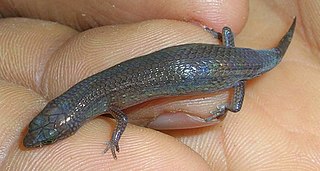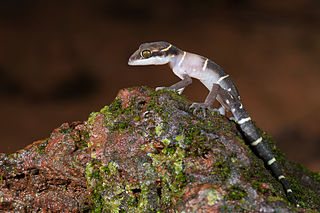
The Eastern Ghats are a discontinuous range of mountains along India's eastern coast. The Eastern Ghats run from the northern Odisha through Andhra Pradesh to Tamil Nadu in the south passing some parts of Karnataka as well as Telangana. They are eroded and cut through by four major rivers of peninsular India, viz. Godavari, Mahanadi, Krishna, and Kaveri. The cradle of Eastern Ghats is Villupuram district in Tamil Nadu.
Colonel Richard Henry Beddome was a British military officer and naturalist in India, who became chief conservator of the Madras Forest Department. In the mid-19th century, he extensively surveyed several remote and then-unexplored hill ranges in Sri Lanka and south India, including those in the Eastern Ghats such as Yelandur, Kollegal, Shevaroy Hills, Yelagiri, Nallamala Hills, Visakhapatnam hills, and the Western Ghats such as Nilgiri hills, Anaimalai hills, Agasthyamalai Hills and Kudremukh. He described many species of plants, amphibians, and reptiles from southern India and Sri Lanka, and several species from this region described by others bear his name.

The Indian golden gecko or Beddome's golden gecko is a species of gecko known only from the Eastern Ghats of India. It was rediscovered from the hills near present-day Tirupati. The rediscovery was after over 100 years since its description.
Beddome's day gecko is a species of gecko, a lizard in the family Gekkonidae. The species is endemic to India.

The Kandyan day gecko or Kandyan rock gecko is a species of diurnal gecko found in Sri Lanka.

Cyrtodactylus collegalensis, also known as the Kollegal ground gecko or forest spotted gecko, is a species of gecko found in and around Mysore hills, at the junction of the Western Ghats and the Eastern Ghats, in South India. Recent taxonomic works and genetic studies revealed that the formerly-supposed genus is actually a subgenus of the widespread genus Cyrtodactylus. It is often confused with the forest spotted gecko.

Cyrtodactylus jeyporensis, also known as the Jeypore Indian gecko, the Jeypore ground gecko, or the Patinghe Indian gecko, is a endangered species of gecko found in India, which was until recently considered extinct. Described from a single specimen in 1877, it was rediscovered in 2010 in the Eastern Ghats of Odisha state, India.

The Southern Ghats slender gecko is a species of gecko with a restricted distribution in the hills of southern India.

Hemiphyllodactylus typus, also known as the Indopacific tree gecko, Indopacific slender gecko, or common dwarf gecko, is a species of gecko found in South Asia, Southeast Asia, and East Asia, and some islands in the Indian and Pacific Oceans.
Eutropis beddomei, commonly known as Beddome's skink or Beddome's mabuya, is a species of skink endemic to India and Sri Lanka.

Ristella travancorica, commonly known as the Travancore cat skink or the Travancore ristella, is a species of skink endemic to the Western Ghats in India.

Sphenomorphus dussumieri, commonly known as Dussumier's forest skink, is a species of skink, a lizard in the family Scincidae. The species is endemic to southern India.

Geckoella is a disputed genus of Gekkonidae endemic to India and Sri Lanka.
Calodactylodes illingworthorum is a species of gecko, a lizard in the family Gekkonidae. The species is known only from the island of Sri Lanka. Common names for C. illingworthorum include the golden gecko, Illingworths' gecko, Illingworths' golden gecko, and the Sri Lankan golden gecko.
Cyrtodactylus soba, also known as the Dumbara bent-toed gecko or Knuckles bent-toed gecko, is a species of gecko endemic to island of Sri Lanka.

Hemidactylus depressus, also known as Sri Lanka leaf-nosed gecko or Kandyan gecko, is a species of gecko endemic to island of Sri Lanka.
The spotted giant gecko is a species of gecko endemic to island of Sri Lanka.

The forest spotted gecko or Erode ground gecko is a species of gecko that is endemic to hills of South India, in parts of Eastern Ghats and Western Ghats. It was first described from hills near Erode in Tamil Nadu in 1870. Subsequently, this species was thought to be similar to Cyrtodactylus collegalensis, but recent studies have confirmed that they are distinct. This species has been sighted in hills around Coimbatore, Tirupur and Erode, in parts of the Eastern Ghats in Tamil Nadu.

Kaestlea is a genus of skinks. These skinks are small, shiny, smooth-scaled species. They are diurnal, terrestrial and insectivorous. They lay eggs to reproduce. These skinks are identified by their distinct blue tail colour. They live in tropical rainforest and montane forest habitats. These secretive skinks silently move through thick leaf-litter on forest floor. They are all endemic to the Western Ghats mountains and in some parts of Eastern Ghats (Shevaroys) of South India.












